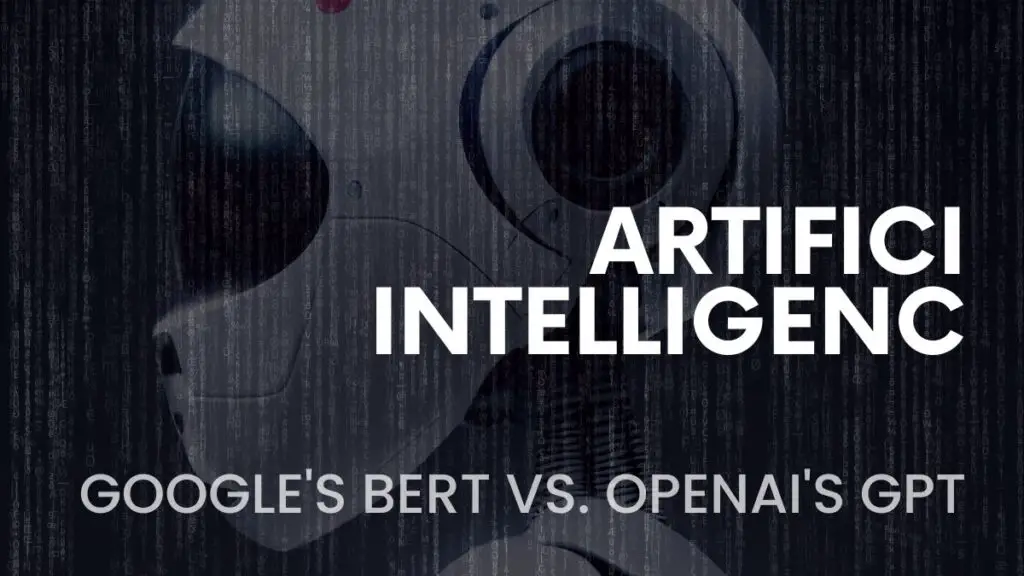Artificial Intelligence has changed the way businesses operate and communicate with customers. The rise of AI language models, such as Google’s BERT and OpenAI’s GPT, has transformed the way we communicate with machines. In this blog post, we’ll compare Google’s BERT and OpenAI’s GPT to help you understand their differences and choose the right AI language model for your needs.
Google’s BERT
Google’s BERT (Bidirectional Encoder Representations from Transformers) is a state-of-the-art pre-trained natural language processing (NLP) model. It was developed by Google in 2018 and has since become one of the most popular AI language models in the industry. BERT is designed to understand the context of words in a sentence, allowing it to provide more accurate and meaningful responses to user queries.
BERT uses a transformer architecture to process input text, making it more efficient than traditional NLP models. It can understand the relationships between words in a sentence and provide more accurate and natural-sounding responses. BERT is pre-trained on a large corpus of data, making it suitable for a wide range of NLP tasks.
OpenAI’s GPT
OpenAI’s GPT (Generative Pre-trained Transformer) is another popular pre-trained NLP model. It was developed by OpenAI, an AI research lab co-founded by Elon Musk, in 2018. GPT is designed to generate natural-sounding human-like text, making it ideal for applications such as chatbots and language translation.
GPT is based on a transformer architecture, similar to BERT, but is optimized for generative tasks. It can generate text by predicting the most likely word based on the previous words in a sequence. GPT is pre-trained on a large corpus of data, allowing it to generate high-quality text for a wide range of applications.
Comparison
Both BERT and GPT are state-of-the-art pre-trained NLP models, but they are optimized for different tasks. BERT is designed to understand the context of words in a sentence, while GPT is optimized for generative tasks. Here are some key differences between the two models:
- Architecture: BERT and GPT both use a transformer architecture, but BERT is designed for bidirectional encoding, while GPT is optimized for unidirectional generative tasks.
- Pre-training: Both models are pre-trained on large corpora of data, but BERT is pre-trained using a masked language modeling task, while GPT is pre-trained using a causal language modeling task.
- Fine-tuning: Both models can be fine-tuned on specific tasks, but BERT is more suitable for tasks such as question-answering and sentiment analysis, while GPT is more suitable for generative tasks such as chatbots and language translation.
- Training data: BERT is trained on a large corpus of text, including Wikipedia and BookCorpus, while GPT is trained on a variety of text sources, including books, websites, and articles.
- Model size: BERT and GPT models vary in size, with larger models being more accurate but requiring more computing resources. BERT models typically range from 110 million to 340 million parameters, while GPT models range from 117 million to 1.5 billion parameters.
As we’ve seen so far, both BERT and GPT are powerful NLP models that can provide great value in different contexts. But which one is better overall? Unfortunately, there’s no clear answer to that question, as it largely depends on the specific use case and the goals of the project.
If the goal is to build a conversational AI agent or a chatbot, GPT might be a better choice due to its ability to generate coherent and natural-sounding text. On the other hand, if the goal is to improve search results or optimize SEO, BERT might be the more suitable option.
Moreover, it’s worth mentioning that BERT and GPT are not mutually exclusive, and can actually complement each other in some cases. For example, it’s possible to use BERT for document classification or entity recognition, and then feed the results into GPT to generate more detailed text. This can result in highly accurate and natural-sounding content.
( View the voting on LinkedIn )
In conclusion, both BERT and GPT are highly sophisticated and effective NLP models that can provide great value in a wide range of applications. By understanding their strengths and limitations, it’s possible to choose the most appropriate model for each use case and achieve optimal results.

